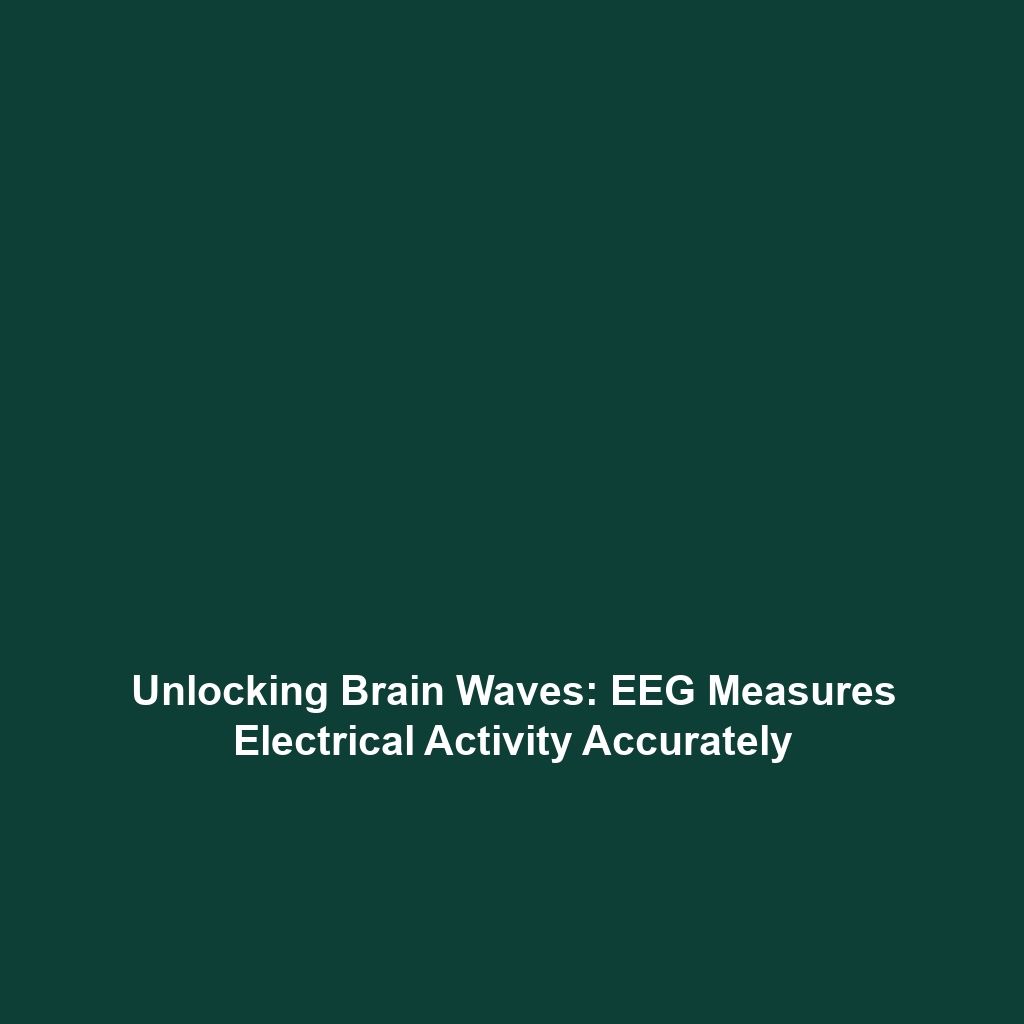EEG Measures Electrical Activity in the Brain: A Biomechanics Perspective
Introduction
Electroencephalography (EEG) is a powerful tool used to measure electrical activity in the brain through electrodes placed on the scalp. This technique is significant within the field of Biomechanics as it offers insights into how neurological processes influence physical movement and performance. Understanding the brain’s electrical signals deepens our knowledge of human biomechanics and enhances applications in rehabilitation, sports science, and cognitive research. This article delves into the key concepts, applications, challenges, and future research surrounding EEG in the realm of Biomechanics.
Key Concepts
EEG technology operates on fundamental principles that connect neurology and biomechanics. The key concepts include:
1. Electrode Placement
Electrodes are strategically placed on the scalp according to the international 10-20 system, allowing for consistent and reliable data collection.
2. Brain Waves
EEG captures different brain wave patterns (alpha, beta, delta, and theta) that provide insights into cognitive states and their connection to physical actions.
3. Signal Processing
Advanced signal processing techniques are employed to filter out noise and extract meaningful data related to motor control and sensory processing in biomechanics.
Applications and Real-World Uses
EEG measures electrical activity in the brain through electrodes placed on the scalp have numerous applications in biomechanics:
- Sports Performance: Coaches use EEG data to enhance training programs by monitoring athletes’ mental states.
- Rehabilitation: EEG aids in the development of brain-computer interfaces that assist rehabilitation for stroke patients, focusing on regaining motor skills.
- Cognitive Ergonomics: Understanding attention and cognitive workload through EEG can improve workplace designs to enhance productivity.
Current Challenges
Despite its advantages, the study and application of EEG measures electrical activity in the brain through electrodes placed on the scalp face several challenges:
- Limited spatial resolution compared to imaging methods like fMRI.
- Interference from external electrical noise can obscure data quality.
- Variability in individual brain wave patterns may complicate standardized interpretations.
Future Research and Innovations
The future of EEG in the field of biomechanics looks promising with the development of wearable EEG technology and advanced analytics. Upcoming research focuses on:
- Integration of EEG with motion capture systems for real-time feedback on both neurological and biomechanical performance.
- Investigating brain-machine interfaces that translate brain signals into movement commands for assistive technology.
- Enhancements in data analysis algorithms to correlate mental states with biomechanical outputs more effectively.
Conclusion
EEG measures electrical activity in the brain through electrodes placed on the scalp play a vital role in understanding the intricate connections between neurology and biomechanics. Through its applications in sports, rehabilitation, and cognitive ergonomics, EEG technology helps us unlock better ways to enhance human performance and well-being.
As research continues to evolve, we encourage interested readers to explore more topics related to Biomechanics and brain function. For further reading, visit our related articles on Brain-Computer Interfaces or the latest advancements in Biomechanical Research.
